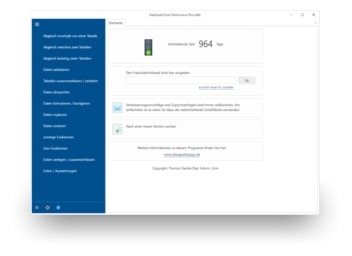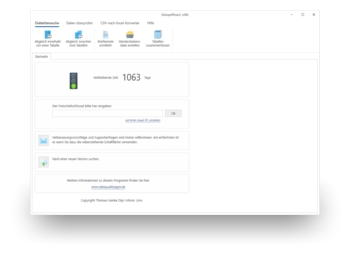Test Advertising Campaigns with Direct Marketing
Direct marketing campaigns are measurable and thus also, to a certain extent, controllable. Test advertising campaigns, where an advertising campaign is purposely varied, are a good method to gain enough information to be able to control future direct marketing campaigns better.
Just like with anything else, you need information on the effects of certain control commands in direct marketing campaigns in order to be able to control them. You can use test advertising campaigns to try to gather this required information. To do so, you can vary your advertising campaign in such a way as to find out how a direct marketing campaign has to look in order to be successful. Test advertising campaigns do not necessarily have to be special advertising campaigns. You can also easily use a advertising campaign that has already been planned. You should break them down into small sub-advertising campaigns and then vary the details. The more variations you test, the better. You can only optimise direct marketing campaigns and avoid the repeat of expensive flops when enough information is available on the effects of particular variations in the advertising campaign. You can read about how to measure the success of direct marketing campaigns in the article 'Determining the success of direct marketing campaigns'.
The following parameters can be varied in test advertising campaigns:
- The timing of the mailing: Are mailings sent during school vacations or holidays as successful as during the rest of the year? Is it more promising to advertise directly before Christmas? Is it better to deliver the sales letters to the post office on a Friday, so it reaches its recipients at the beginning of the week rather than on other weekdays?
- The composition of the sales letters: Is there any advantage in inserting an additional brochure? Is a simple postcard maybe the more promising alternative? Or does an elaborately designed, more unusual sales letter bring more success?
- The phrasing of the letter: Is it more promising to keep the letter short and sweet, or should you try to entertain and captivate your readers with a potentially multi-page letter?
- The graphical and textual composition of brochures and similar advertising material: Is it more promising to use lots of text or should you rather make use of the power of images? Is a high-quality print better than the cheap mass product, already well known by the addressee from other sales letters?
- The advertised product: Not every product is easy to sell, or at least not with every target group. Also, not every product is suitable for direct mail selling. It is possible that a sales letter has more success when other products are advertised, or when other products become more space in the sales letter.
- The price: Does a low price bring more sales than a higher price? It is possible that you can compensate for a low price with relatively high prices for subsequent orders, e.g., in the case of update deliveries for loose-leafs.
- Discounts and/or free gifts: Can order patterns be positively influenced by discounts and/or free gifts, which are, if possible, provided with an expiration date?
- The order method and/or the response options: Is an inserted response postcard, a pre-filled order form or a reference to your website more promising for customer response?
- The target group: Does the advertised product have the same success with small, medium and large businesses? Are there differences in the success of an advertising campaign depending on the business sector of the addressees?
- The target region: Does the advertising campaign have more success in some regions than in others, for example in cities or in rural areas?
- The address source: How good are the addresses from a particular source? How many of the advertising letters could not be delivered?
- The contact person: Is it more promising to address the letter to a concrete contact person in the company address, rather than to address the company as a whole or a particular department? And if you do not address a particular contact person, which general contact person is more promising, for example, ‘personnel manager’ or ‘personnel department’?
By the way, to be able to determine the success of an advertising campaign with a particular target group, you do not even have to sub-divide the sales campaign. If you make a note of the selection criteria you used to select a particular address on the records in the table, then you can use a simple database query among the solicited addresses to find out which selection criteria delivered the most successful addresses. The same also applies to the target region, which is easy to determine using the postal code.
In order to be able to attribute the success or failure of particular variations of an advertising campaign to individual parameters of the direct marketing campaign, you should not change too many parameters at one time.
To make sure that the address lists of the individual test advertising campaigns do not overlap, you should use a tool such as the DataQualityTools to compare and synchronize them with each other. You can read about how to do this in the article 'Processing black lists with DataQualityTools'.

